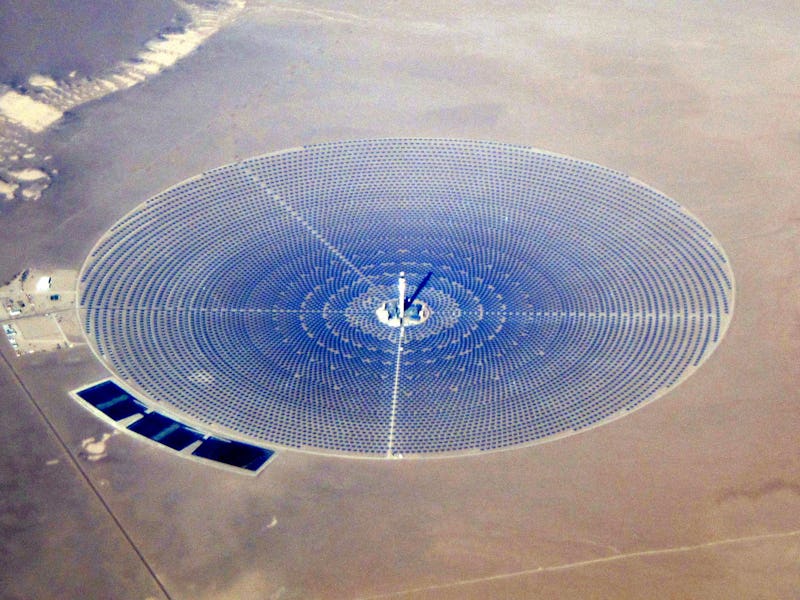Concentrated Solar Power: Dubai Reveals Plan for the World’s Largest System
The ambitious project could set numerous records.

The United Arab Emirates could play host to the world’s largest concentrated solar power facility, also known as CSP. Saudi Arabian firm ACWA Power is the primary team behind a giant facility near Dubai, which plans to harness 700 megawatts through this alternative to photovoltaic panels.
“It’s a completely different technology because you have to do a heat exchange and (use) steam turbines, a process that makes it more expensive than solar PV,” Abdulhameed Al-Muhaidib, director of asset management at Saudi Arabia’s ACWA Power, told Arab News in a Tuesday report. “The main benefit is storage because you can store heat, while in panels you can’t and lithium batteries are still expensive.”
The system will be based in Seih Al-Dahal, 30 miles south from Dubai. When it’s finished in 2030, it’s expected to produce 950 megawatts of power total, with 250 megawatts from PV panels and a further 700 from CSP. That’s bigger than the 580-megawatt facility in Ouarzazate, Morocco, which was expected to be the largest when the first phase of 160 megawatts switched on in 2016.
In an industry excited by the prospect of collecting solar energy through cells, concentrated solar has slipped under the radar of mainstream conversation. Lithium-ion batteries are regularly touted as a potential means of storing solar energy, but inexpensive applications remain elusive. Tesla’s Hornsdale project in South Australia, currently the world’s largest battery, stores around 100 megawatts of power and cost an estimated $50 million.
The United States Department of Energy explains that CSP offers an alternative to lithium-ion, using three methods to collect energy:
- Parabolic trough uses large, curved mirrors to reflect the sun onto a receiver pipe full of transfer fluid. That’s used to power a steam turbine that generates the electricity. The heat can also be transferred to a storage system.
- A power tower uses flat mirrors, known as heliostats, to shine the light onto a receiver. Water pumped up the tower becomes steam, which is then used to move the turbine.
- Some power towers switch out the water for molten salt, This can flow into thermal storage tanks, and because the hot salt keeps its temperature for so long it can move through the steam generator as needed to provide a consistent source of power.
A diagram from the United States Department of Energy showing how the system works.
“The reason (for turning to CSP) is very simple — it’s driven by the tariff, where PV and wind have already internationally given a lower tariff and are basically cheaper compared with conventional energy,” Al-Muhaidib told the publication. “But for the first time, the price for the new CSP technology has gone under double digits, reaching 7.3 cents per kilowatt-hour.”
In the case of the Dubai project, these molten salt tanks will store 15 hours’ worth of capacity, more than enough to cover nighttime generation. The project will involve building an 853-foot solar tower, which its developers claim will be the largest in the world. The solar park as a whole is expected to produce five gigawatts when completed.
The project is also supposed to help Saudi Arabia complete similar projects at home, where the kingdom is working toward its Vision 2030 plan to diversify from oil. Part of this plan covers the world’s largest solar farm, built in collaboration with SoftBank, which will offer a staggering 200 gigawatts.